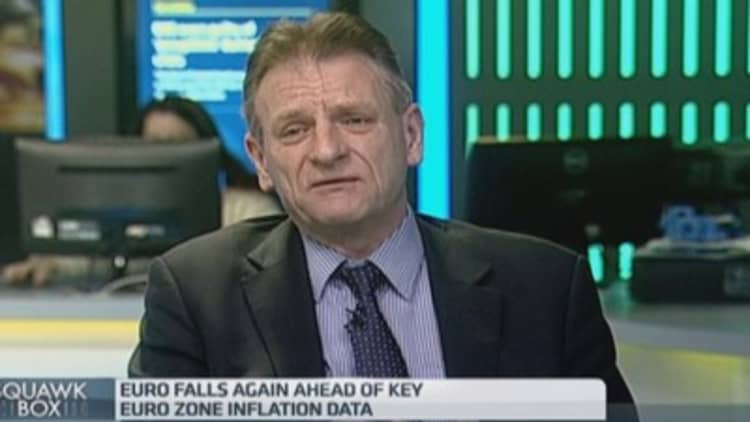Global markets have had a volatile start to 2015 - after just three days of trading, Brent crude has fallen to a fresh 5 ½-year lows, the euro slipped to a level not seen in nine years and U.S. Treasury yields are sub 2 percent for the first time since October.
Uncertainties surrounding global growth, deflation and the euro zone have left investors unsure where to turn, but one thing most seem to agree on for the year ahead is the U.S.
Among the predictions for 2015 are a robust gross domestic product (GDP) growth of around 3 percent, which should support U.S. equities, and a persistently strong dollar. However, such a strong consensus is set to create "significant volatility", putting perceived safe havens at risk, investors warn.
"We have a consensus which is very polarized on certain trades – the stronger dollar, and some country selection in emerging markets. This can create some significant volatility just by having a consensus," said Jean Medecin, a member of the investment committee of one of France's largest asset managers, Carmignac Gestion.
"We are part of this long dollar, but we are part of it with our eyes wide open. I think we are very well aware that this is now a consensual trade," he told CNBC.
Central bank moves
Big moves from central banks are expected in 2015, with the European Central Bank (ECB) expected to start open-ended sovereign bond-buying in the first quarter of the year, while the U.S. Federal Reserve is likely to raise interest rates in the second half of the year.
But global head of foreign exchange strategy at Morgan Stanley, Hans Redeker, dismissed predictions that ECB easing will be enough to "counterweight the concerns of earlier Fed tightening".
"A higher U.S. dollar is actually adding to volatility and if the Fed is going to hike -- if they believe that their economy has got escape velocity – the U.S. may be able to cope with this, but is the rest of the world ready to cope with that?" Redeker told CNBC.
Oil boost?
The sharp 48 percent plunge in average crude oil prices since last July has boosted the outlook for U.S. GDP growth this year and if prices stay in the recent $50-$60 a barrel range for a sustained period, then U.S. GDP growth will likely accelerate further, according to HSBC.
The bank has kept growth forecasts for US GDP in 2015 at 2.8 percent this year, up from an estimated 2.4 percent in 2014.
This is all good news for U.S. stocks, said global market strategist at JPMorgan Asset Management David Stubbs, who said the U.S. is still where investors should be this year, crowded or not.

"Anytime that a trade is crowded it worries me, but you can be consensus in the middle of a cycle and that is exactly where you want to be. And I think what we are seeing now is an acceptance of the broad part of the investor community of the case that we have had for a while about the US– that the recovery is not only sustainable but it will pick up some momentum," he said.
Read MoreS&P 500 records longest loss streak since late 2013
"It will lead to faster top-line revenue growth, and margins which are expanding – this is good for the equity market," he added.
But if the last two years are anything to go by, consensus views can disappoint and this year some major themes are at risk, according to Bank of America Merrill Lynch. It lists U.S. "decoupling", commodity weakness and an ever-dovish Fed as three outcomes to be wary of.
"Our own forecasts show U.S. outperformance, but this seems well reflected in asset prices. However, we also project a growth improvement in the euro zone and emerging market (despite Russia's recession), which could lead to reallocation into cheaper markets that could also stabilize euro dollar (we forecast 1.20 for end-year)," said David Hauner, head of EEMEA cross-asset strategy and economics at the bank.
"In this case European, foremost equities, could surprise on the upside. Our own commodity team expects a moderate recovery on better growth and open ended QE from January to March, with Brent averaging $77 by the end of the year," he added.


